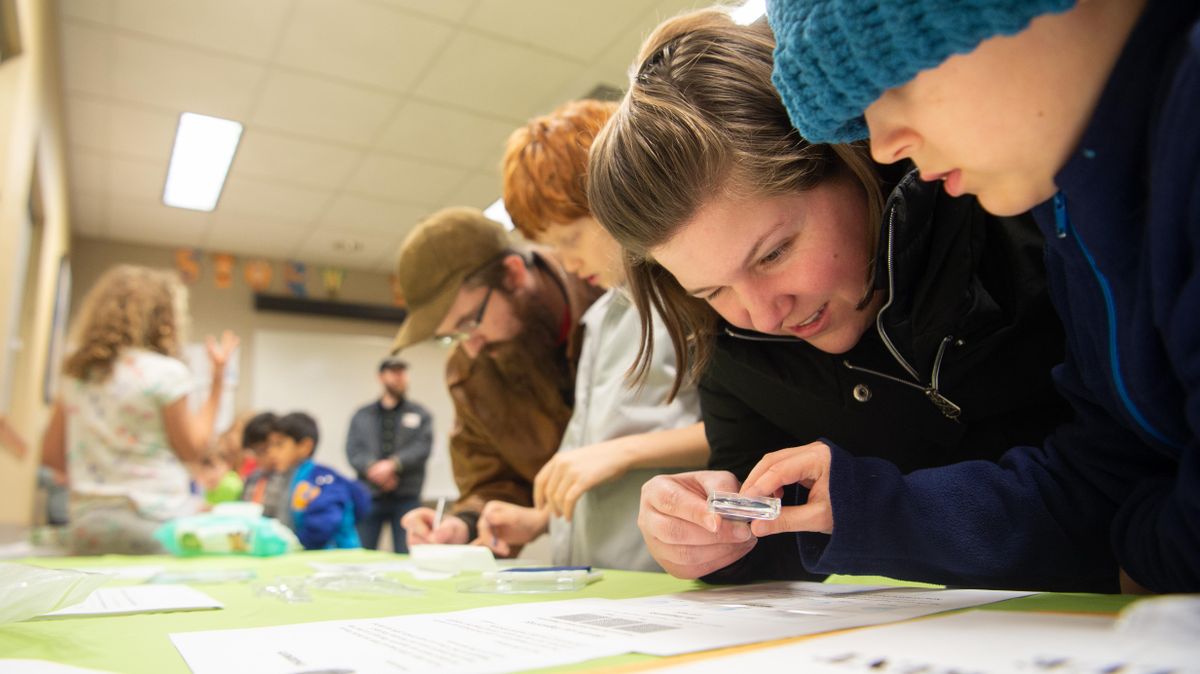Learning forensic science at cellular level; Spokane County Library District offers classes for all ages

The forensics class being offered at Spokane County Library District branches this month is messy and some might consider it a little gross, so it’s sure to be a hit with the kids.
The first session at the Airway Heights Library last week attracted about 10 kids who enthusiastically worked to find the DNA of strawberries, examine their fingerprints and study “blood splatter” by dropping paint on a sheet of paper from varying heights. Along the way they were given clues to solve a crime by using science to identify the suspect.
Community Librarian Corinne Wilson, who led the class, said the library tries to offer a STEM (science, technology, engineering and math) program at least once a quarter. The classes are free and open to everyone, though the forensics class is for children ages 8 and up.
Wilson said the STEM classes are always well received and the kids like doing hands-on activities. “The kids are really excited,” she said. “They love science.”

Ben Smith brought his 11-year-old son, Abraham Ives, to the class.
“We usually do science things,” Smith said. “We’ve done dissection nights.”
The two have also made robots, made hydrogen and have done other classes the library offers. They live near Cheney, but that doesn’t limit their visits. “We usually go to all the libraries around,” Smith said.
He said the classes make STEM activities more approachable.
“I think they’re really important,” he said. “It introduces concepts rather than making it some big thing.”
Abraham said he likes being able to do things himself. “I like interacting with other people and I like learning stuff,” he said.
The procedure involved in extracting strawberry DNA started with the kids smashing a strawberry into pulp and then mixing in different ingredients. At the end the kids were left with strawberry juice to which they added rubbing alcohol to reveal white strands, which they plucked out with toothpicks to examine closely.
Stephanie Warren brought her two children, 8-year-old Linnea and 10-year-old Annika, to the forensics session. She home-schools her daughters and welcomes the educational classes offered at the library.
“There’s a wide variety,” she said. “Some places focus on only one part of STEM. I like my kids being exposed to the different things.”
Annika seemed particularly enthusiastic about the blood splatter experiment, which showed that the farther the dropper was from the paper, the bigger the splash when the paint landed. “She wants to be a vet,” her mother said. “She doesn’t shy away from that.”
Bringing her children to the class is also a way for them to learn things Warren doesn’t know well. “A lot of the hands-on stuff I can do, but I don’t know this stuff well enough to do it,” she said.
The kids at the library also fingerprinted themselves and used magnifying glasses to determine if they had an arch, loop or whorl type of fingerprint.